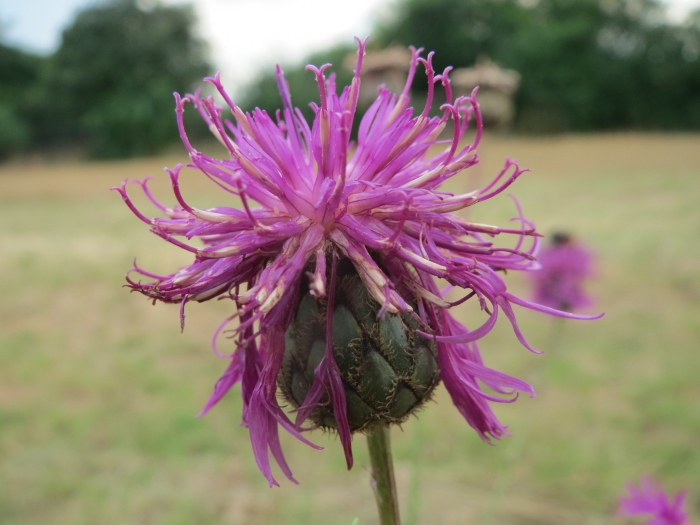Greater Knapweed
(Centaurea scabiosa)
Greater Knapweed (Centaurea scabiosa)
/
/

Andreas Rockstein
CC BY-SA 4.0
Image By:
Andreas Rockstein
Recorded By:
Copyright:
CC BY-SA 4.0
Copyright Notice:
Photo by: Andreas Rockstein | License Type: CC BY-SA 4.0 | License URL: http://creativecommons.org/licenses/by-sa/4.0/ | Rights Holder: Andreas Rockstein | Publisher: iNaturalist | Date Created: 2016-07-24T17:56:54-07:00 |





















Estimated Native Range
Summary
Centaurea scabiosa, commonly known as Greater Knapweed, is a perennial herb native to a variety of habitats in Europe, including dry grasslands, chalk and limestone grasslands, hedgerows, and cliffs, often on calcareous (lime-rich) soils. It typically grows up to 35 inches (90 cm) tall and features deeply dissected leaves. The plant is distinguished by its thistle-like purple flower heads, which bloom from June to September and are highly attractive to pollinators such as bees and butterflies.
Greater Knapweed is valued for its showy flowers and ability to thrive in poor soils, making it a popular choice for wildflower meadows, perennial borders, and wildlife gardens. It is also used in traditional medicine for its purported diuretic and tonic properties. In cultivation, it prefers full sun to part shade and requires well-drained soil, tolerating drought once established. While it is not particularly prone to diseases, it can occasionally suffer from powdery mildew. Due to its potential for self-seeding, it may need to be managed to prevent unwanted spread. Gardeners should be aware that Centaurea scabiosa can be potentially invasive outside its native range, so it is important to check local regulations before planting.CC BY-SA 4.0
Greater Knapweed is valued for its showy flowers and ability to thrive in poor soils, making it a popular choice for wildflower meadows, perennial borders, and wildlife gardens. It is also used in traditional medicine for its purported diuretic and tonic properties. In cultivation, it prefers full sun to part shade and requires well-drained soil, tolerating drought once established. While it is not particularly prone to diseases, it can occasionally suffer from powdery mildew. Due to its potential for self-seeding, it may need to be managed to prevent unwanted spread. Gardeners should be aware that Centaurea scabiosa can be potentially invasive outside its native range, so it is important to check local regulations before planting.CC BY-SA 4.0
Plant Description
- Plant Type: Herb
- Height: 2-3 feet
- Width: 1-2 feet
- Growth Rate: Moderate
- Flower Color: Purple
- Flowering Season: Spring, Summer, Fall
- Leaf Retention: Deciduous
Growth Requirements
- Sun: Full Sun, Part Shade
- Water: Low, Medium
- Drainage: Fast, Medium
Common Uses
Bee Garden, Border Plant, Butterfly Garden, Deer Resistant, Drought Tolerant, Low Maintenance, Rabbit Resistant
Natural Habitat
Native to a variety of habitats in Europe, including dry grasslands, chalk and limestone grasslands, hedgerows, and cliffs, often on calcareous soils
Other Names
Common Names: Greater Knapweed, Hardheads, Bighead Knapweed
Scientific Names: , Centaurea scabiosa, Acosta scabiosa, Acrocentron scabiosa, Centaurea scabiosa f. scabiosa, Centaurea scabiosa var. laevis, Centaurea scabiosa var. scabiosa, Centaurea scabiosa var. triangularis, Centaurea scabiosa var. vulgaris, Colymbada scabiosa subsp. scabiosa
GBIF Accepted Name: